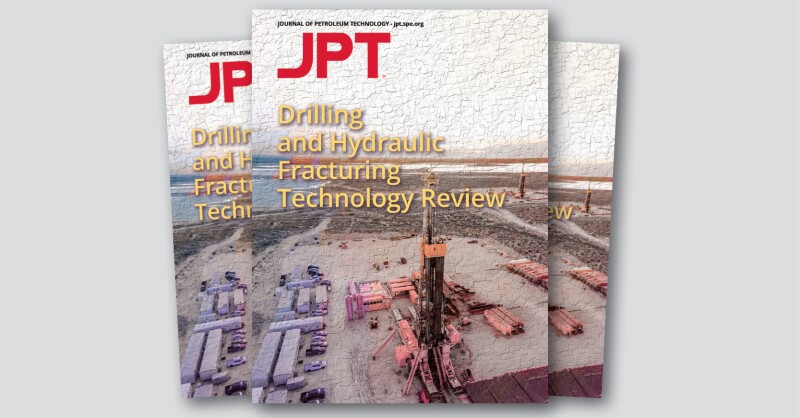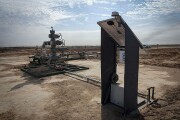Trending Content
Power Up With JPT Newsletters
JPT Newsletter (Weekly).
All the top stories, trends, and tech.
JPT Unconventional Insights (Monthly).
Fresh takes on shale and tight oil.
The London-headquartered independent acquires position in the US Gulf while preparing Zama for final investment decision.
The Norwegian major said it is using artificial intelligence for predictive maintenance throughout its facilities and for interpretation of seismic data from the Norwegian continental shelf.
Following a US military operation to arrest Venezuela’s president, analysts say there is no easy fix for the country’s beleaguered upstream sector.
-
The platform brings the field’s installed production capacity to 1.5 million BOPD.
-
Field results highlight how rethinking tubing-anchor-catcher design can reduce gas interference and support late-life production.
-
This article is the sixth and final Q&A in a series from the SPE Research and Development Technical Section focusing on emerging energy technologies. In this final edition, Matthew T. Balhoff, SPE, of The University of Texas at Austin shares his views on the future of upstream education.
-
The $1.3-billion deal targets DJ Basin assets producing 35,000 BOEPD, and Japex aims to increase that output to 50,000 BOEPD around 2030.
Get JPT articles in your LinkedIn feed and stay current with oil and gas news and technology.
Voices From the Industry
-
Data and impartial viewpoints can help de-risk exploration portfolios and keep resource estimates in check.
-
A new tubing-conveyed tool combines wellbore cleanout with multi-tracer deployment for production diagnostics and reservoir monitoring.
-
Technology developers expect the tight-oil industry to give lightweight proppants another look after the Permian Basin’s biggest operator becomes an adopter.
-
Alaskan oil is entering a renaissance driven by a predicted 13% upswing in 2026 production, the largest since the 1980s, and a possible reboot of LNG exports to Asia from the Kenai Peninsula, supplied via pipeline from the North Slope.
President's Column
-
What do today’s membership trends mean for SPE? While declining numbers and an aging demographic can be unsettling, the reality is that these challenges are not unique to SPE. As professional associations everywhere face generational shifts, SPE members have an opportunity to hear about the success stories ongoing now and reflect on what will sustain our community in …

JPT Drilling and Hydraulic Fracturing Technology Review
Bold ideas, big impact. Creative thinking is reshaping unconventional development and cutting costs. Read more here.
-
SponsoredAs HPHT wells push equipment to the edge of material limits, operators are turning to advanced thermoplastics and sealed electrical assemblies to maintain system integrity. From ESP insulation to BOP control systems, the right component design can prevent failures, lower intervention costs, and extend equipment life in the harshest offshore environments.
-
SponsoredIn oil and gas operations, every decision counts. For more than 2 decades, SiteCom has been the trusted digital backbone for well operations worldwide, driving insight, collaboration, and efficiency.
-
SponsoredAdvance your career with the new Pipeline Engineering Program at the Technical University of Leoben, a 5-month course combining on-campus and online learning, integrating industry expertise, engineering practice, and future-ready skills for professionals in oil, gas, and emerging energy systems.
-
SponsoredSince 1997, intelligent completions have transformed reservoir management, but adoption remains limited due to perceived complexity. The industry reached a pivotal moment with the development of next-generation technologies that address longstanding challenges and offer simpler operation solutions.
Technology Focus
Recommended for You (Login Required for Personalization)
-
KTH researchers unveil a nickel–iron catalyst that speeds up water splitting, boosting efficient, sustainable hydrogen production.
-
SPE member Silviu Livescu has been chosen to receive the award in recognition of his groundbreaking contributions to next-generation, low-enthalpy geothermal energy systems, which are enabling widespread, cost-effective building heating and cooling solutions.
-
GeoMap Europe is the latest in a series of interactive global geothermal maps that combine large subsurface and surface data sets to highlight where geothermal resources and development opportunities are strongest for power, heat, cooling, and storage.
Content by Discipline





















![JPT_2025-09_GuestEd1_SS_382853197[4].jpg](https://assets.spe.org/dims4/default/4883523/2147483647/strip/true/crop/850x475+0+46/resize/295x165!/quality/90/?url=http%3A%2F%2Fspe-brightspot.s3.us-east-2.amazonaws.com%2F8a%2F95%2Fe4e82cb54fd597d497a5b1267f8a%2Fjpt-2025-09-guested1-ss-3828531974.jpg)
































































